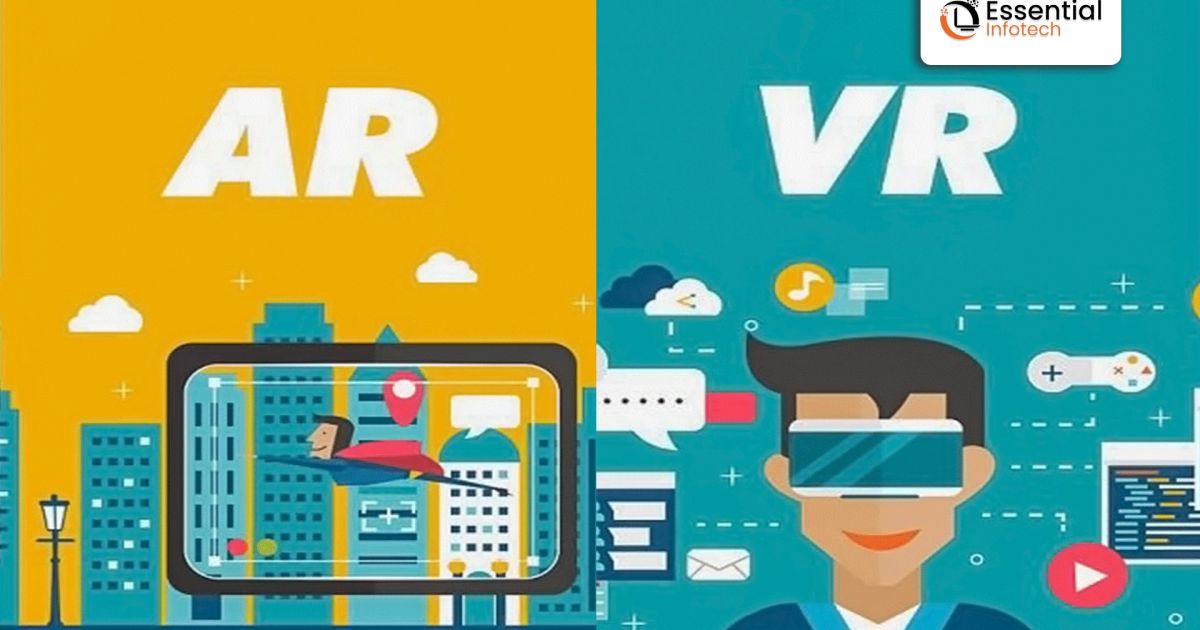Augmented Reality (AR) and Virtual Reality (VR) Innovations
Augmented Reality (AR) and Virtual Reality (VR) Innovations
Virtual reality (VR) and augmented reality (AR) have grown from specialized devices
to revolutionary instruments that are changing markets and user experiences.
The potential uses for these immersive technologies are growing quickly as long
as innovation continues to propel them forward. This article will examine some
of the most recent advancements in AR and VR and how they influence different industries.
The Rise of AR and VR Innovations
- Healthcare: By providing medical personnel immersive training simulations, facilitating remote
consultations, and assisting with surgical planning, augmented reality and
virtual reality are transforming the healthcare industry. Medical errors
are being minimized and patient outcomes are being improved by innovations
like augmented reality overlays during surgeries and virtual patient
simulators.
- Education: Through the establishment of interactive educational
games, virtual field journeys, and realistic virtual classrooms, augmented reality
and virtual reality are revolutionizing the way that learning experiences
are taught. With the use of these tools, students can investigate difficult
topics in a practical, enjoyable way that promotes comprehension and
memory retention.
- Retail: By allowing virtual try-ons for apparel and
accessories, seeing furniture in actual settings, and producing
interactive product demos, augmented reality is improving the retail
experience. Virtual reality-enabled stores are
transforming the way we shop by enabling customers to browse and buy
products from the comfort of their homes.
- Entertainment: With their immersive
storytelling experiences, interactive game settings, and virtual concerts
and events, AR and VR are pushing the boundaries of
entertainment. VR games and AR apps, which allow users to interact with
virtual characters and explore fantasy worlds, are revolutionizing the entertainment industry.
Latest AR and VR Innovations
- Project Aria by Meta: Project Aria through Meta is an advanced
augmented reality research project that seeks to develop wearable AR glasses that can easily incorporate
digital content into the real world. These glasses have the power to completely
change the way we interact with our environment—from relationships and
productivity tasks to navigation and information retrieval.
- HTC Vive Flow: Designed for immersive entertainment and leisure, the
HTC Vive Flow is a lightweight, transportable virtual reality headset. The
Vive Flow gives users a cozy and portable virtual reality experience for gaming, meditation, and virtual
travel courtesy of its high-resolution electronic devices and built-in
audio.
- Google's ARCore Depth API: By integrating depth
information to their apps, developers may use Google's ARCore Depth API to
create more realistic and immersive augmented reality experiences. With
the help of this technology, AR objects can now interact with the environment
specifically, creating fresh possibilities for AR applications in design,
gaming, and navigation.
- The VR-3 and XR-3 headsets by
Varjo:
In VR and AR, Varjo's XR-3 and
VR-3 headsets are raising the bar for visual quality and immersion.
These headsets, which come with high-resolution displays, eye-tracking
technology, and sophisticated hand tracking, provide unmatched accuracy
and realism for use in professional applications including industrial design,
training simulations, and architectural visualization.
Conclusion
The impact of AR and VR technologies on different companies
is growing as they advance further. The latest developments in AR and VR are
pushing the envelope and completely changing a variety of industries, including
healthcare, education, retail, and entertainment. By adopting these
revolutionary technologies and exploring their possible uses, institutions and
businesses may remain ahead of the curve while simultaneously opening up fresh
opportunities for expansion and development..

